Today's focus is not Zoo but Botanic Garden. Got a bit lost before I finally realised one should have alighted at the NUS bus stop...
Ta-da... and this is not the main NUS.. but the Law Faculty. I got that blur too when Senior told me is near NUS previously...
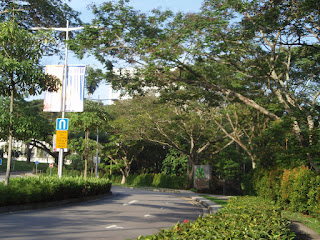
As I got lost for half an hour, I left 15 minutes to be at the visitor centre... but while rushing, I can't help but admire at the grace of the black swans. By the way at the end of the walk, I saw the white swans too but did not managed to take pics.
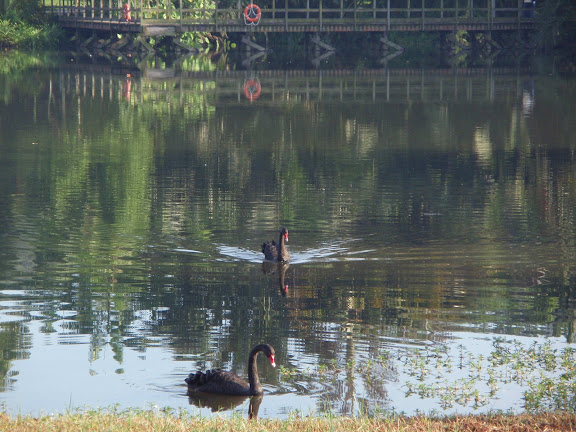
And I made it to the Visitor Centre on time. Was the earliest in fact haha.
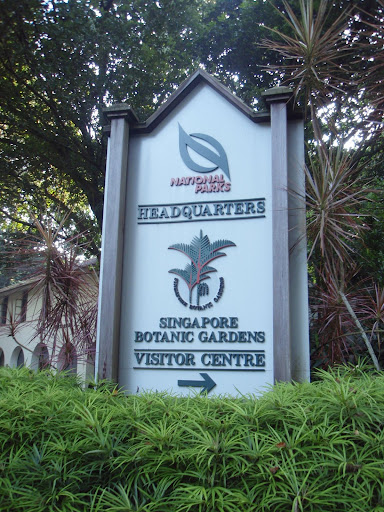
Thus begin our guided tour (15 bucks per pax - pricey one would say BUT that guide is really good. Learnt alot)
First he told us that when we visit someone's house, we will first preview the outward appearance before exploring the insides... Likewise you should first appreciate the rainforest outward view... The emergents, the canopy, the epiphytes, the climbers, the understory and the forest floor. Hmm of course the outward view can only see the emergents and canopy bah... I was just recalling my 6 levels of rainforst "p

I love the sigh of this... These are called
common red stem fig.
"The figs grow on the trunk, often in prolific masses. Each fig contains hundreds of tiny flowers that are pollinated by minute wasps living in association with the flowers."
Source: The sign erected beside the tree
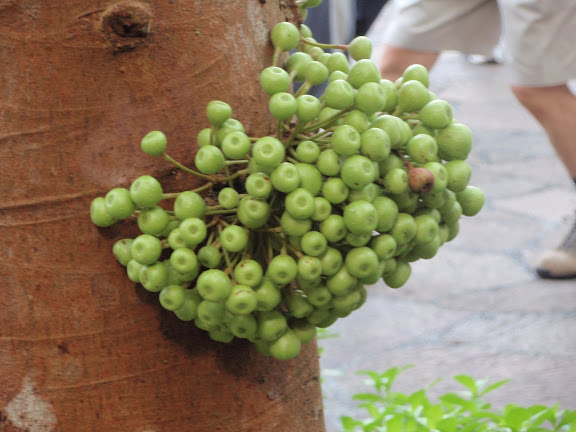
Open up view of the fig.. where you may find a wasp.. hee hee

This is an African Oil Palm.. I remember the fruits have an oily feel...

And lots of rattan. Guide says in the past you can find lots of cheap rattan furnitues in neighbourhood shops. Now you can only purchase rattan furnitures in upscale Orchard road.. Sighz human are so wasteful...
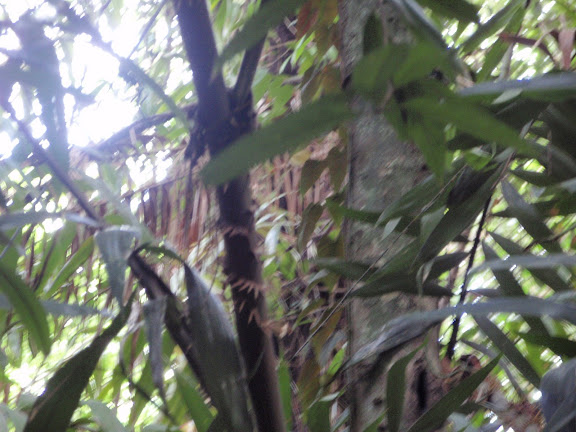
I did not know these are Pandan leaves... They are so big and thick.. and probably sharp too.. beware!
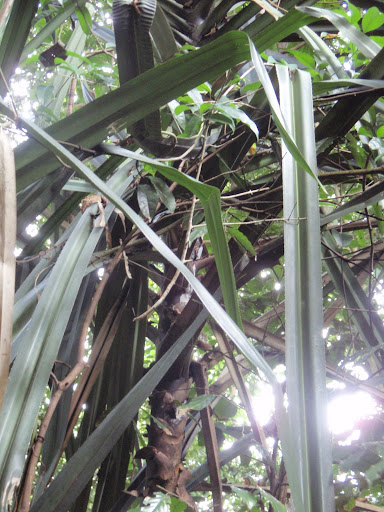
Because there wasn't a structured path in the rainforest thus some rampant walkings had damaged this precious rainforest that "Do not enter" sighs had to be adapted to protect it from further damages. (I forgot to mention that you can only find rainforest in SG in Botanic Gardens and Bukit Timah only.. and of course a replicate biodome in the SG Zoo - Fragile Forest!)

Rainforst has lots of tall trees...
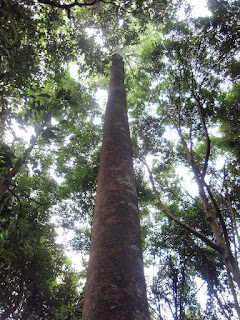
And to protect them from being struck by lightning, a conductor was attached to earthed the electric charges.. Mind you, these conductors don't come cheap... I forgot the price already but I remembered we were considering changing job to attaching conductor for tall trees haha..

How do one know the age of the tree? They used to say count the rings.. but that applies only in the temperate countries because trees "hibernate" during winter and stop growing rings... but in the tropics, it is forever summer and forever growing rings.. Thus you have to measure the circumference to know the age. Hmm I'm suddenly thinking if humans age can be measured by waistline too? hmmmm
Stars flower... such pretty sight. But have you ever consider these stars are the fruits to grow the trees and how many actually succeeded? The rainforest may seem sturdy and tough on the outside but it is actually very fragile with shallow top soil and intricate web and complex interdependence... In short, the relationships in the rainforest are complicated too =D.

Ferns.. used to love them in primary schools. I love to see their undersides for their spores... which helps to continue their existence...

Tree Vandalism.. I really wonder what is so interesting about carving... but I do know that some love stories the protagonists will return back to the tree to see their carvings and it will send some warm fuzzy feeling.. I suppose that is call romantic.. but this?

This is call a leaf litter plant because it collects all the leaves and nutrients to sustain itself... Interesting!

Longest Palm leave...

Coke secret ingredient - The Giant Cola. It is said that coke no longer uses this secret ingredient though...

After we bid the guide goodbye and thank him for his vast and interesting guide... we took a walk towards the food court. On the way I caught sight of this box of dog poo bags... While I like the idea of Botanic garden providing bags for dog owners, I would much appreciate if the owners bring their own bags, that is their responsibility... Of course such box is useful should owner use up their own bags due to certain reasons...

Had a fruitful day... would I come back again? Hmm to discuss in my personal blog...
One last question though, how do bananas grow? Answer can be found
here.












































